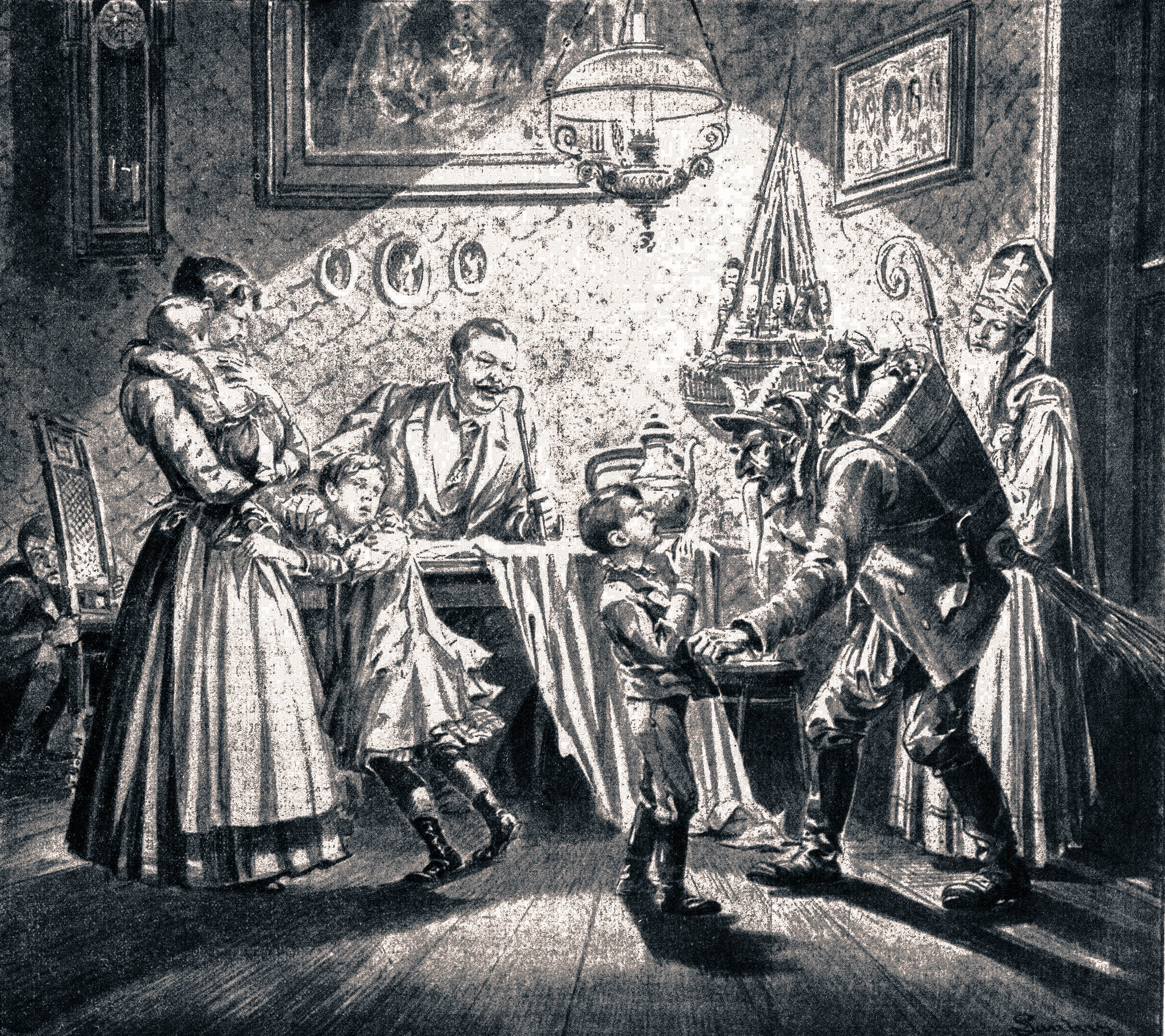Krampus Christmas: The Most Terrifying Time of the Year
It’s December 5th in Prague, Czech Republic.
The Christmas Markets have just opened and are bustling with locals and tourists alike. The streets are lined with twinkling lights. Vendors are selling decorations, trinkets, treats, and Svařák, a delicious mulled red wine. Town squares, filled with beautifully-decorated wooden huts, emit the rich aroma of traditional chimney cakes, slow-roasted hams, and fresh goulash.
But on this particular evening, there is an eerie feeling in the night air. Along the gothic streets of Prague, a horrible sort of darkness lurks in the shadows. Every so often, off in the distance, we can hear children scream out in horror.
From behind the glimmering Christmas tree in the city square appears a shadowy creature. Walking closer, the children’s screeches become louder. As we approach, a demonic figure comes into focus, one that only our nightmares could concoct.
Krampus, what nightmares are made of.
It is a deranged, furry beast-man with blood-thirsty eyes. He has claw-like fingers and a demonic head adorned with giant, goat-like horns that curl around its head. His blood-stained tongue is oddly elongated, and he is covered in skulls and animal skins. The rhythmic sound of his cowbell rings louder and faster as he menacingly moves towards us. This is not very Christmasy. It's dark and demonic.
Who is this being?
The darkness’ name is Krampus. This satanic creature prowls the streets of Central Europe once a year on the eve of Saint Nicholas Day, known as Mikuláš Day here in Czechia. Krampus descends from Alpine folklore and a centuries-old tradition celebrated in Germany and Austria. During Krampuslauf, or Krampus Run, town’s men would dress in half-man, half-goat costumes, roam the streets with birch sticks to scare naughty children and unruly adults.
Pagan folklore depiction of the mythology surrounding Krampus and Saint Nicholas.
Legend has it that St. Nicholas and Krampus make their way around town together, with St. Nicholas putting candy in the good children’s shoes and Krampus placing nothing but sticks in the shoes of naughty ones. Even worse, throughout Christmas season the naughtier of children are tortured and beaten with sticks. The most disordlery, naughtiest children disappear forever and become Krampus’ dinner!
The Catholic church attempted to banish Krampus festivities but their efforts failed.
With German roots, the horrifying, yet fascinating tradition is widely celebrated in Germany, Austria, Hungary, Slovenia, Czechia, and parts of Italy during the holiday season. Krampus’ original narrative actually has nothing to do with Christmas at all but rather is derived from pagan mythology. Krampus, whose namesake is rooted from the German word for claw, is said to be the son of Hel. In Norse mythology, Hel reigns over the realm the dead.
For centuries, the Catholic Church forbade Krampus festivities due to the creature’s likeness to the devil. However, this effort was proven unsuccessful and Krampus celebrations have returned more popular as ever. Czechia is specifically seeing a resurgence in these traditions, with its International Krampus festival drawing 20,000 people a year to Kaplice in Southern Bohemia.
Some call it twisted, sadistic even. Others are fascinated by the custom, and consider their children being frightened by the beast a right of passage. Either way, if you decide to venture out on Mikuláš Day eve, take the opportunity to immerse yourself in this decidedly unique Christmastime tradition in Europe. The contrast between the dark demon prowling the gothic streets and the joyously bright Christmas lights is something you and your little ones won't soon forget.
Mikuláš Day eve in Prague's Old Town Square.






